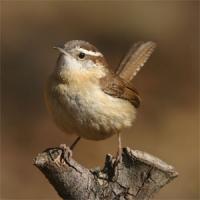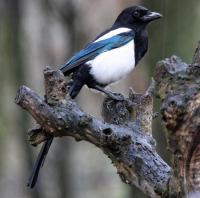- Home
- FAQs
- Customer Video Gallery
- Customer Photo Gallery
- Bird Facts
- Bird Food Blog
- Bird Information
- Feeding Advice
- Small Animal Information
- A to Z of Guinea Pigs
- A to Z of Hamsters
- A to Z of Rabbits
- Basic Care for Guinea Pigs
- Basic Care for Hamsters
- Basic Care for Rabbits
- Basic care for Chinchillas
- Basic care for Ferrets
- Basic care for Gerbils
- Basic care for Mice
- Basic care for Rats
- Buying a Healthy Small Animal
- Does your Reptile need a Licence
- Equipment for Ferrets
- Equipment for Hamsters
- Equipment for Mice
- Equipment for your Chinchilla
- Equipment for your Gerbil
- Equipment for your Guinea Pig
- Equipment for your Rabbit
- Keeping a House Rabbit
- Dog Information
- Cat Information
- Customer Information
- Fat Balls
- Suet Pellets
- Straights
- Seed Mixes
- Suet Treats
- Mealworms
- Bird Feeders
- My Account

| Scientific Name | Troglodytes troglodytes |
| Breeding | late April |
| Fledge Days | 15-20 |
| Incubation Days | 13-18 |
| Lifespan | 2 years |
| Number of Clutches | 2 |
| Number of Eggs | 5-8 |
| Size | 9 - 10cm |
| Weight | 7 - 12g |
| Wingspan | 13 - 17cm |
Bird Family : Wrens
Wren Facts - Information About Wren
Wren-Troglodytes Troglodytes
When you mention Wren to most people the first reaction is that it is Britains smallest bird, however that accolade belongs to the Goldcrest. The Wren is also very small bird, its Latin name ‘troglodytes’ means…cave dweller, this is a direct link to its nest, a small domed structure.
Identification:
Adult
- Without doubt one of the UKs most well known and easily recognised birds if seen well.
- Adult males and females are alike.
- Wrens are tiny birds, around 9cm from tip of tail to tip of bill.
- They often appear ‘bull headed’ and ‘stiff tailed’ they also have relatively long legs.
- The whole of the upperparts and tail are mid-brown with slightly darker barring.
- Wings will often show some white markings in the primaries, see photo.
- The head shows a reasonably plain cap, pale cream coloured supercilium, dark eyestripe and brown speckled ear coverts.
- The most obvious feature is the small cocked tail, it is always held in the cocked position.
- Underparts are paler brown than the upperparts and are finely barred.
- Bill and legs are dark straw colour, the eye is black.
- Wrens move very quickly around the garden, often keeping in thick cover.
They will flick and jerk their tail and call regularly.
Juvenile
- Juveniles appear from April onwards and are identical to adults.
Status and Distribution
The Wren is an extremely abundant breeding resident in the UK with over 8 million pairs. The Wren is Britain’s commonest breeding bird. It occurs in all counties throughout the UK and Ireland. In winter numbers increase as migrants come to the UK from Northern Continental Europe to escape their cold winters, migrants start to arrive in October to winter in our less severe climate.
Habitat/Food
Wrens occur in all habitat types throughout the UK, woodlands, parks, gardens, farmland, hedgerows indeed any open country habitat with suitable scrub.
In the garden Wrens stay hidden but will take Insects on and around the Bird Table, most often they will stay low and feed from the ground.
Song/Call
Considering their size, Wrens have a massive voice!
Several call notes; most often a hard metallic ‘Tick’ sometimes repeated 3 or 4 times, also a short sharp rattle like ‘chrrrr’. Song is sung mostly from deep cover but will occasionally sing from an exposed perch.
The song is loud and always moving down the music scale.
It is a series of metallic buzzing and trilling notes. ‘see-see-see zoo zoo zoo rrrrrrrrrrr sioo sioo sioo pee pee pee rrrrrrrr wit wit wit wit wi wit witt’
The following food is favoured by Wren












